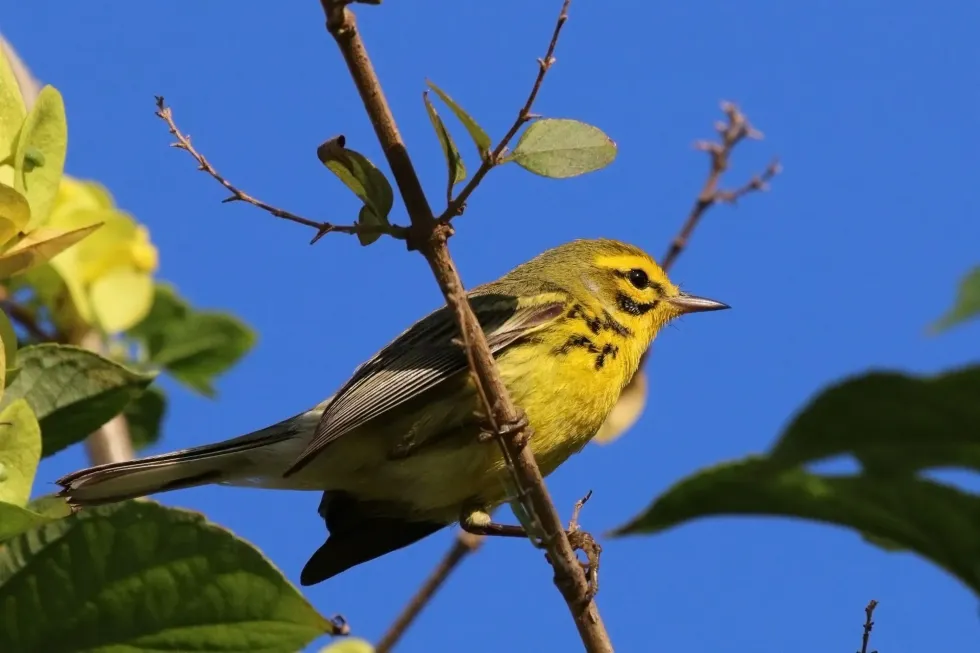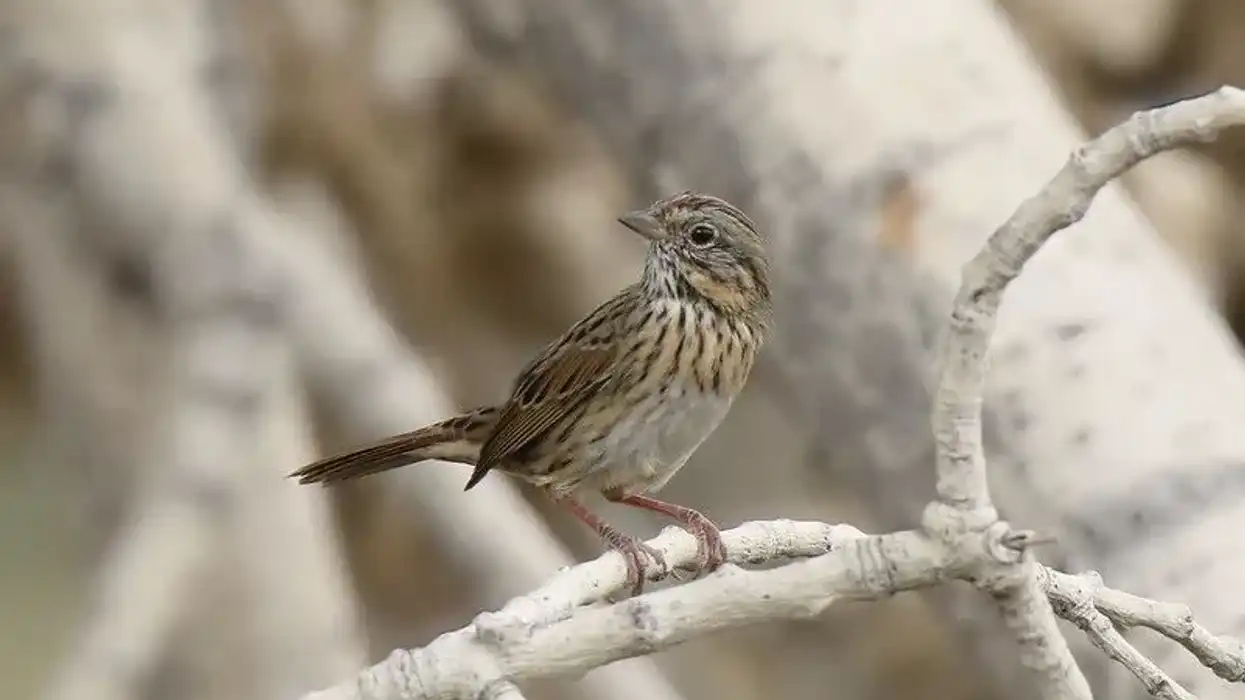The prairie warbler (Setophaga discolor) is a vibrant and colorful species of songbird which, true to type, is a melodious bird, found in North America. This species belongs to the order Passeriformes, family Parulidae, and genus Setophaga.
This species is definitely a beautiful one with their contrasting palette of colors as well as their tails.
The prairie warbler’s recent population numbers have been dwindling in the last few years, thanks to rapid urbanization and extremely poor plant and nature conservation habits on the part of us humans. Prairie warblers are known for their melodious songs.
Find out more about this colorful and melodious creature by reading further about these brown-headed warblers. If you like this, check out the mourning warbler and the Blackburnian warbler.
Prairie Warbler Interesting Facts
What type of animal is a Prairie Warbler?
The prairie warbler (Setophaga discolor), is a category of small songbirds. These members of the birds' realm belong to the New World warblers, or wood-warblers, family.
What class of animal does a Prairie Warbler belong to?
The prairie warbler is in the class Aves; that is, the biological classification of organisms characterized by the presence of forelimbs modified into wings, and whose body is covered with feathers.
How many Prairie Warblers are there in the world?
The numbers of the global population of prairie warblers have been observed to decline in the past decade or so. Despite this, the present estimate stands at about 3.5 million, but this number is expected to shrink by roughly 2% per year as theorized by the North American Breeding Bird Survey.
Where does a Prairie Warbler live?
The prairie warbler’s ideal habitat is an open forest with plenty of space. They are also often found in open fields and farms. Generally, these birds stay in their habitats throughout the year, while some migrate to Northeastern Mexico and the Caribbean islands.
What is a Prairie Warbler's habitat?
The prairie warbler’s ideal habitat is an open forest in a nest with plenty of space, often in north Florida. Prairie warblers like to live in forests and are also often found in open fields and farms. Sometimes, in Florida, these birds can be observed living in mangrove forests.
Who do Prairie Warblers live with?
Prairie warblers often live by themselves in a nest when they enter the juvenile age groups. It is usually observed that the initiative to leave the nest is taken by the juvenile itself. Prairie's breeding occurs twice a year.
How long does a Prairie Warbler live?
The average lifespan of a black prairie warbler is about seven years. The lifespan of a prairie warbler may even go above seven years if proper care of its food and habitat is ensured.
How do they reproduce?
The reproductive cycle of black prairie warblers begins with males courting the female. During the wooing procedures, the male sings to entice a potential partner. Besides singing, there are flight displays followed by chasing and nibbling the prospective female.
Though not much evidence is available to support the claim, prairie warblers are often observed to have two breeding seasons per year. After selecting their partner, the male mounts the female for fertilization. On average, the female lays about four or five eggs which hatch after about 12-14 days.
What is their conservation status?
According to the IUCN’s (International Union for bird Conservation of Nature), the black prairie warblers have been categorized under the conservation status of the least concerned species.
Prairie Warbler Fun Facts
What do Prairie Warblers look like?

Prairie warblers are extremely pretty to look at because they are small and colorful birds that come in yellow and black colors living in a forest in a nest. The males are usually differentiated on the basis of their higher degree of colorfulness.
The males, as well as females, have a common pattern of yellow on their faces which extends downwards to their ventral side. Both of them also sport brownish streaks along the lengths of their backs.
Male prairie warblers are characterized by vibrant colors and eye patch-like patterns.
The male prairie warbler also usually has black marks on its face. The female prairie warbler is characterized by colors that are not as bright as the males’.
Moreover, unlike males, the females have block color patterns instead of having marks of contrasting colors. When they are young, prairie warblers are in the process of developing a colorful coat, which is why they are considerably less vibrant than both males as well as female prairie warblers.
How cute are they?
The prairie warbler is an extremely cute bird owing to its colorful appearance, small size, and melodious voice. On a scale of one to five, the prairie warbler would easily secure a five for cuteness and beauty.
How do they communicate?
Since they are typically songbirds, prairie warblers usually communicate using vocalizations such as songs and chirps. Prairie warblers use different frequencies and tones to communicate different things to either their mate or somebody else.
Since these are also territorial birds, prairie warblers also use calls to issue warnings to other birds. They also communicate their affection and desire to mate using actions and physical movements. Prairie warbler's breeding can be seen twice a year.
How big is a Prairie Warbler?
Prairie warblers are a group of small-sized birds. The average length of the Setophaga discolor ranges between 4.3–5.2 in while the wingspan can extend up to 7 in.
How fast can a Prairie Warbler fly?
There are no exact details about the flying speed of the young Setophaga discolor. They have similar flying speeds to that of tiny birds and can fly fast.
How much does a Prairie Warbler weigh?
The weight of Setophaga discolor ranges between 0.2-0.3 oz.
What are their male and female names of the species?
There is no specific designation allotted to the members of species and breeding of young prairie warblers based on their sex. The males are referred to as male prairie warblers while the females are referred to as female prairie warblers.
What would you call a baby Prairie Warbler?
The offspring of prairie warblers are referred to as young ones, juveniles, nestlings, or fledglings.
What do they eat?
The young prairie warblers are insectivores. The diet of these birds includes beetles, flies, ants, aphids or cicadas, moths, butterflies, and more. They are also known to survive on plant products such as seeds, nuts, fruits, etc.
Are they dangerous?
Prairie warblers are not typically dangerous. They usually keep to themselves and are normally found in areas not inhabited by humans.
Would they make a good pet?
Prairie warblers are extremely active birds that need open spaces to fly about and for breeding. It is not possible to provide this freedom to them as a pet. Therefore, these birds do not make for good pets.
Did you know...
The young female members of the species show peculiar behavior and feed off the remains of the hatched eggshells.
Prairie warblers who dwell in the terrains of Florida are thought to be a separate subspecies to their widespread migratory relatives.
The Prairie Warbler's call
The young prairie warblers usually communicate through songs in order to attract a mate which can be anywhere between four and 20 notes long. They also use single note calls to communicate warnings and territorial dominance. A prairie warbler's song is melodious to hear, especially since they are songbirds.
Threats to the Prairie Warbler
Even though the young prairie warbler’s conservation status per the IUCN is of Least Concern, this species’ population has been dwindling for the past decade or so. This decline in numbers, which is expected to sustain in the future, is mainly due to deforestation leading to a loss of habitat.
If rapid urbanization continues to occur at the cost of the earth’s forests and nature, at the same rate as it is today, the prairie warbler will soon be an endangered species.
Here at Kidadl, we have carefully created lots of interesting family-friendly animal facts for everyone to discover! Learn more about some other birds including the palm warbler and the mockingbird.
You can even occupy yourself at home by drawing one of our Prairie Warbler coloring pages.










